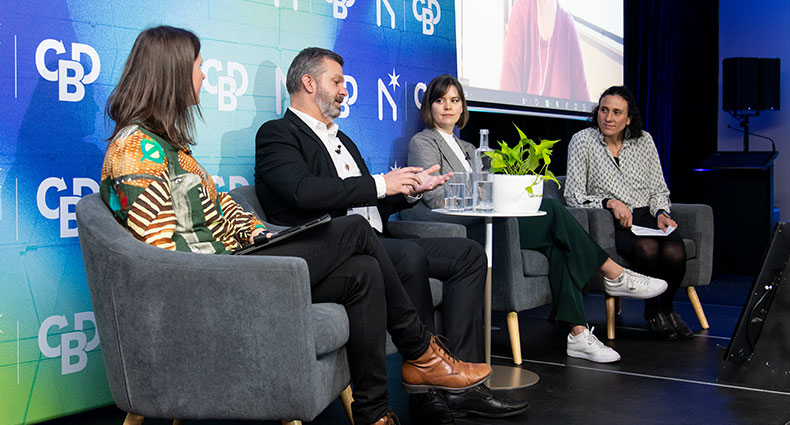Will regulation or innovation lead us to the full circle outcome? “Both” was the answer from our powerhouse panel at the 2024 NABERS + CBD Conference, who came together to explore progress and potential of the circular economy.
Dr James Goddin, Head of Circular Economy, Thinkstep ANZ
"We need a combination of regulation and innovation. To an extent regulation is a stimulator of innovation... [such as] new traceability requirements in the EU.
“[Circular economy] is a very systemic way of thinking and there are a lot of economic advantages.... The challenge is the language we use around circular economy. We do use 'recycling' a lot as a term. Recycling is an important facet but it's not the main component of the circular economy... there are metrics now for circularity that encompass recycling, reuse, durability, bio-based solutions... We need to start talking about those metrics more routinely because it does then open the door to innovation."
"Extending the service life of a 12-month product by one month is equivalent to incorporating 15% recycled content... For most products adding an extra month of life is far easier. Obviously if you can use recycled content and extend the life that's even better still."
Chloe Rose, Head of Communications, Australian Packaging Covenant Organisation
"The circular economy is an amazing guiding star."
"There is a big movement amongst brand owners to move away from just recycling and get quite creative with how their business models need to work... Are we selling light bulbs or are we selling light?"
Jenni Philippe, Co-chair of Infrastructure & Precincts Taskforce at Circular Australia and Associate, Aurecon
"The amount of investment across organisations and government is pretty phenomenal. We have circular economy [roles]... policies are coming out day-to-day. It's impressive and I'm quite hopeful about the trajectory we are on."
"If you look at net zero ambitions... circular economy is a massive enabler of that. We can decarbonise the grid, but we'll still have 45% of our emissions coming from the way we extract, product and use products and assets."
"We cut a ribbon when we create a whole new building and everybody's so excited [about] leading edge. And we're not going to feel as excited if we've maintained something for 10 extra years. So, we need really need to shift [mindsets] and how we look at value creation and success."
"Translate the problem solving into the language of your audience. If it's about cost saving start by looking at circular solutions that are going to save costs."
Manon Klein, Director, Impact Hub Amsterdam
"The discussion is moving away from waste and waste recycling to more upstream solutions and more systemic solutions."
"Legislation obviously really helps...Metrics definitely help... we [also] need a lot of experimentation, innovation, trial and error in practice. That shows the blind spots or the bottlenecks in legislation… It starts with innovators and front running companies that are willing to test something new and take a risk."
Sara Levett, Acting Head of Market Transformation, NABERS
NABERS Waste is a "really useful visible indicator to show towards industry and parts of government that we have systemic problems in Australia... We have transport issues; Australia is huge. It's hard to move waste and materials... [We have] big challenges but… we have to keep fostering innovation."
Watch ‘Is the circular economy coming full circle?’ and other sessions from the 2024 NABERS + CBD Conference here.

